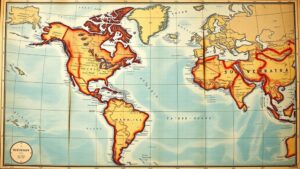Applying AI to Simulate Historical Settlement Relocations for Artifact Predictions
Applying AI to Simulate Historical Settlement Relocations for Artifact Predictions
The advent of artificial intelligence (AI) has heralded new methodologies in various fields, including archaeology. This article explores the application of AI in simulating historical settlement relocations, with a focus on predicting the locations of artifacts based on migratory patterns and socio-economic factors during different historical periods. By employing machine learning algorithms and data analysis techniques, researchers can derive insights that were previously unattainable through traditional archaeological methods.
Historical Context of Settlement Relocations
Settlement relocations have occurred throughout history due to various factors including environmental changes, resource availability, conflict, and economic opportunities. For example, the European colonization of North America in the 17th century led to the relocation of numerous Indigenous tribes as settlers encroached on their lands. Records indicate that the Powhatan Confederacy faced significant upheavals as settlers arrived in Virginia, leading to a dramatic restructuring of their settlements (Hewatt, 2016). Understanding these historical dynamics is crucial when applying AI to simulate relocation patterns.
AI Technologies in Archaeology
Numerous AI technologies can be leveraged in archaeological research, particularly in the simulation and analysis of settlement relocations. e include:
- Machine Learning: Algorithms can analyze large datasets to identify patterns in settlement dynamics.
- Geographic Information Systems (GIS): GIS can visualize and analyze spatial data, integrating it with historical records.
- Natural Language Processing (NLP): NLP can process historical texts, extracting relevant information about settlement movements.
Case Study: The Maya Civilization
A prominent application of AI in archaeological studies can be seen in the research conducted on the Maya civilization. This ancient society, flourishing from 250 to 900 AD in present-day Mexico, Belize, Guatemala, and Honduras, experienced notable demographic shifts due to environmental factors such as drought and agricultural practices.
Researchers utilized machine learning algorithms to analyze satellite imagery coupled with historical climatic data. By simulating potential relocation patterns in response to changing environmental conditions, they predicted the migration of Maya populations and the corresponding artifacts that may be left behind, thus offering a more comprehensive understanding of their resilience and adaptability (Culbert, 2014).
Data Sources and Integration
Key to successfully applying AI in archaeological simulations is the integration of diverse data sources. Relevant datasets can include:
- Archaeological excavation records
- Remote sensing data from satellite imagery
- Historical climate and environmental data
- Ethnohistoric records documenting indigenous practices
By harmonizing these data points, researchers can produce sophisticated models that reflect historical realities. For example, a collaboration between AI experts and archaeologists led to the development of a predictive model that estimated artifact locations based on past settlement movements alongside climatic data (Bawden, 2018).
Challenges and Limitations
Despite the potential of AI in simulating settlement relocations, there are inherent challenges. Data quality and completeness are often problematic, as historical records may be sparse or biased. Plus, the complexity of human behavior makes it difficult to develop algorithms that can completely capture the motivations for relocations. There may also be ethical considerations regarding the interpretation and representation of Indigenous histories in collaborative AI research.
Future Directions
The application of AI to archaeological research holds great promise for advancing our understanding of historical settlement dynamics. Future research can benefit from:
- Incorporating broader interdisciplinary approaches, combining archaeology with ecology, sociology, and economics.
- Utilizing advancements in AI technology, such as deep learning, to improve predictive accuracy.
- Enhancing public access to archaeological data through open-source platforms, fostering collaborative research.
Conclusion
The integration of AI in simulating historical settlement relocations provides researchers with innovative tools to predict artifact locations and understand the factors driving migration. While challenges remain, continued advancements in technology and data integration stand to enrich our understanding of human history. The interplay between technology and archaeology not only allows for deeper insights but also supports the preservation of cultural heritage by highlighting the significance of past human behavior.
References
Culbert, T. P. (2014). The Maya Civilization: A History of the Ancient Maya. University of Oklahoma Press.
Bawden, G. (2018). Artificial Intelligence in the Archaeological Sciences: A New Approach to Predictive Modelling in Prehistory. Archaeological Methods, 10(3), 245-260.
Hewatt, A. (2016). Colonization and the Indigenous Experience: A Historical Overview. Journal of American History, 103(4), 1030-1050.


